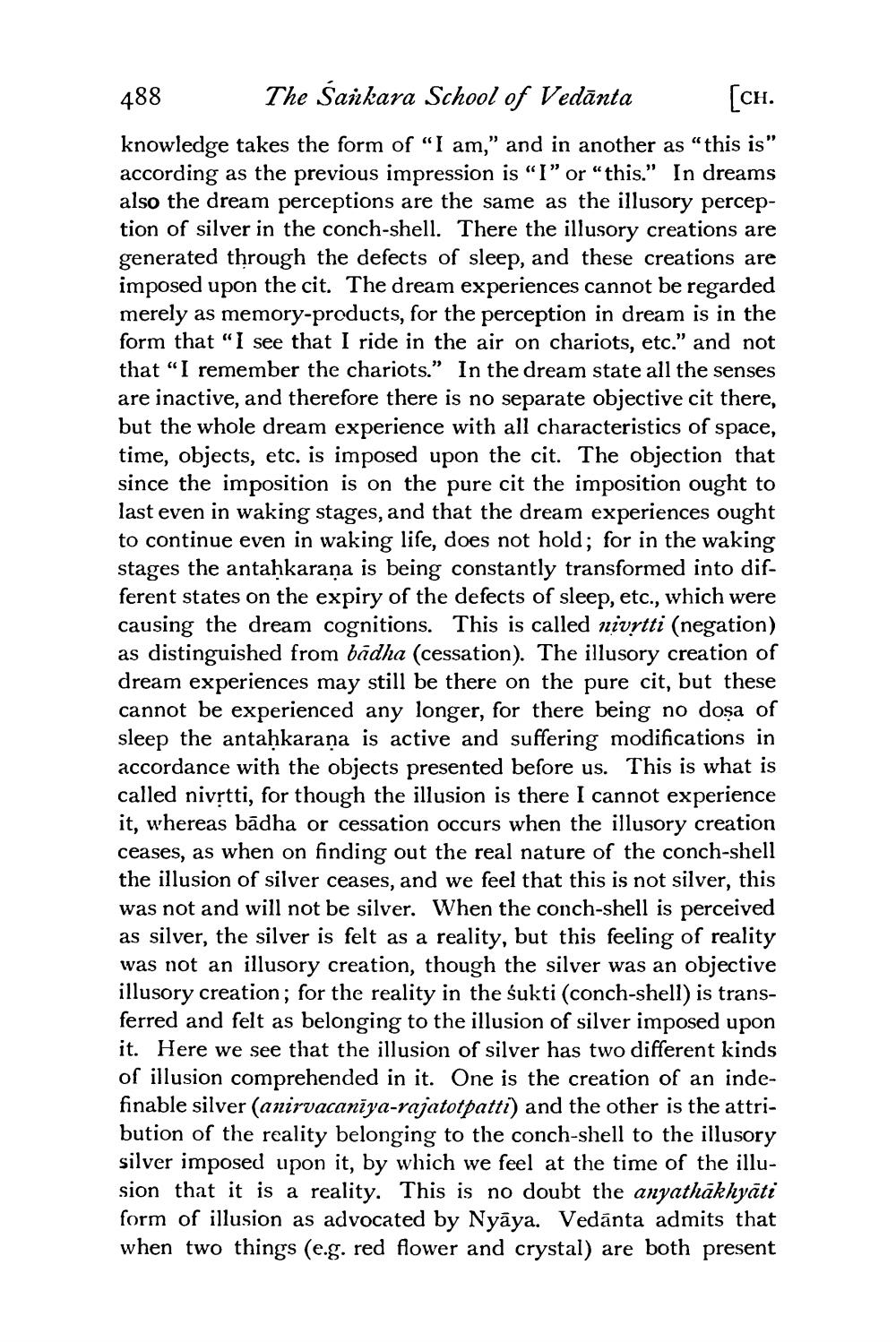________________
488
The Sankara School of Vedānta [CH. knowledge takes the form of “I am," and in another as “this is" according as the previous impression is “I” or “this." In dreams also the dream perceptions are the same as the illusory perception of silver in the conch-shell. There the illusory creations are generated through the defects of sleep, and these creations are imposed upon the cit. The dream experiences cannot be regarded merely as memory-products, for the perception in dream is in the form that "I see that I ride in the air on chariots, etc." and not that "I remember the chariots.” In the dream state all the senses are inactive, and therefore there is no separate objective cit there, but the whole dream experience with all characteristics of space, time, objects, etc. is imposed upon the cit. The objection that since the imposition is on the pure cit the imposition ought to last even in waking stages, and that the dream experiences ought to continue even in waking life, does not hold; for in the waking stages the antahkarana is being constantly transformed into different states on the expiry of the defects of sleep, etc., which were causing the dream cognitions. This is called nivytti (negation) as distinguished from bādha (cessation). The illusory creation of dream experiences may still be there on the pure cit, but these cannot be experienced any longer, for there being no doşa of sleep the antahkarana is active and suffering modifications in accordance with the objects presented before us. This is what is called nivịtti, for though the illusion is there I cannot experience it, whereas bādha or cessation occurs when the illusory creation ceases, as when on finding out the real nature of the conch-shell the illusion of silver ceases, and we feel that this is not silver, this was not and will not be silver. When the conch-shell is perceived as silver, the silver is felt as a reality, but this feeling of reality was not an illusory creation, though the silver was an objective illusory creation; for the reality in the sukti (conch-shell) is transferred and felt as belonging to the illusion of silver imposed upon it. Here we see that the illusion of silver has two different kinds of illusion comprehended in it. One is the creation of an indefinable silver (anirvacaniya-rajatotpatti) and the other is the attribution of the reality belonging to the conch-shell to the illusory silver imposed upon it, by which we feel at the time of the illusion that it is a reality. This is no doubt the anyathākhyāti form of illusion as advocated by Nyāya. Vedānta admits that when two things (e.g. red flower and crystal) are both present




